The Sun's interior magnetic field
| Angular velocity in the solar interior (Korzennik & Eff-Darwich 2011). |
From helioseismology it is known that the Sun's radiation zone rotates as a solid body, whereas the convection zone rotates differentially — slower at the poles and faster at the equator. The shear layer in between is known as the 'tachocline'.
The solid rotation of the radiation zone can be explained by the presence of a global-scale magnetic field, in accordance with Ferraro's law of isorotation. This field must be confined to the radiation zone, i.e., prevented from diffusing out into the convection zone.
The differential rotation of the convection zone is maintained by the transport of angular momentum by convective turbulence. The convection zone exerts a retrograde drag on the high-latitude tachocline, which drives meridional flows that try to burrow into and thereby spin down the interior. To prevent this burrowing, the magnetic field must transport angular momentum to the poles from lower latitudes.
My research concerns the processes that confine the interior magnetic field below the convection zone, and the transport of angular momentum by the magnetic field in the tachocline.
In middle and low latitudes the internal magnetic field can be confined by "magnetic pumping" by overshooting convective plumes. In high latitudes the field must be confined by the tachocline's meridional flow, which is expected to be downwelling near the pole.
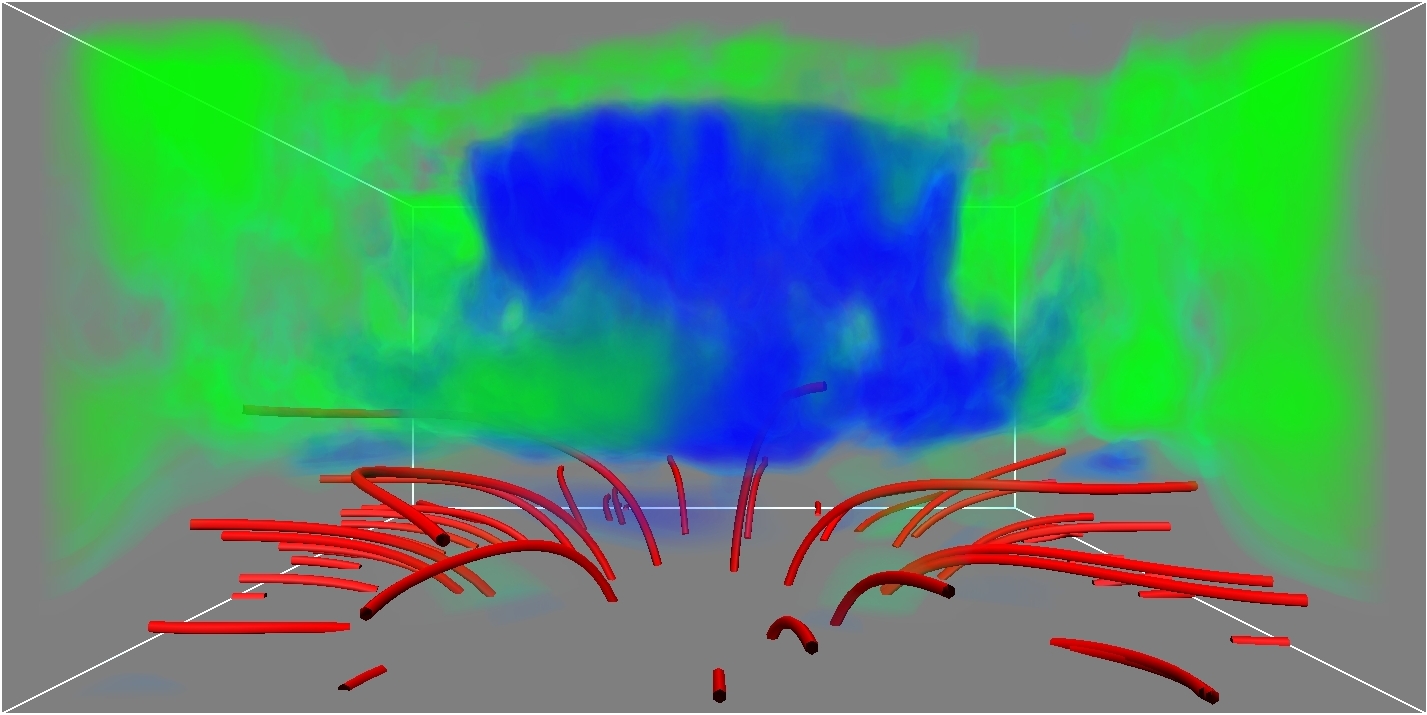
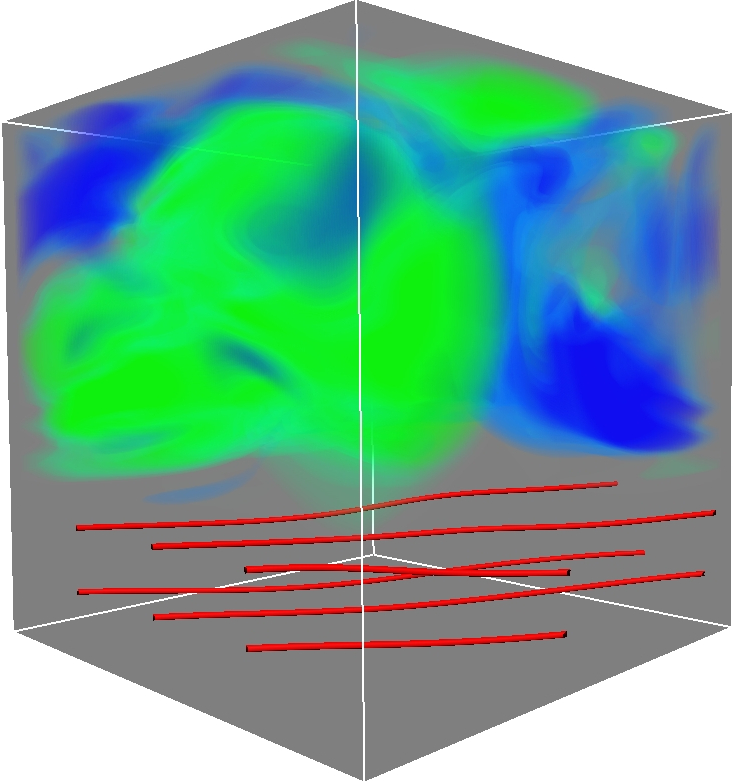
Numerical simulations demonstrating confinement of the Sun's interior magnetic field (red) in high and middle latitudes.
Simulations were performed with the HPS code (see Tobias et al. 1998, ApJ, 502, L177).
In middle latitudes, the shear within the tachocline winds up the magnetic field lines, transmitting a prograde Maxwell torque to the poles that maintains the solid rotation of the radiation zone. This applies whether the interior field is aligned with the rotation axis, or tilted at a finite angle.
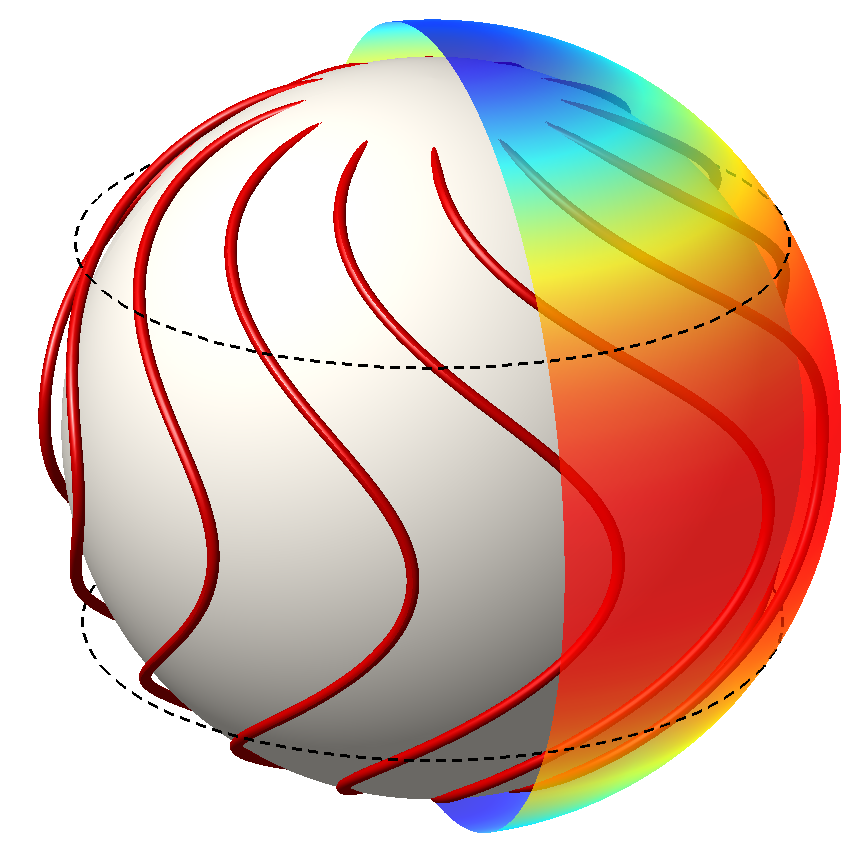

The global magnetic field geometry in the tachocline, for an interior field that is aligned with
the rotation axis (left) or tilted at 30° (right).
Double-diffusive convection (semi-convection) in stars and planets
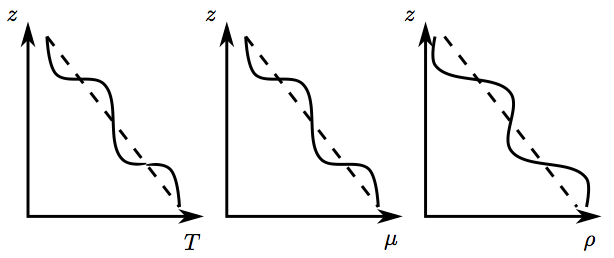
|
| Vertical profiles of temperature, composition, and density in a semi-convective region. Initially linear profiles (dashed) spontaneously develop into a staircase of layers (solid). |
The interiors of stars and planets are often subject to double-diffusive instabilities, because temperature diffuses much more rapidly than either momentum or chemical composition.
Near the cores of massive stars and giant planets, a stabilizing vertical gradient of composition can inhibit thermal convection, but may still allow a type of double-diffusive convection known as "semi-convection".
Under certain conditions, a semi-convective region can spontaneously develop into layered convection, which leads to an enormous increase in the transport of heat and composition (Mirouh et al. 2012, ApJ, 750, 61).
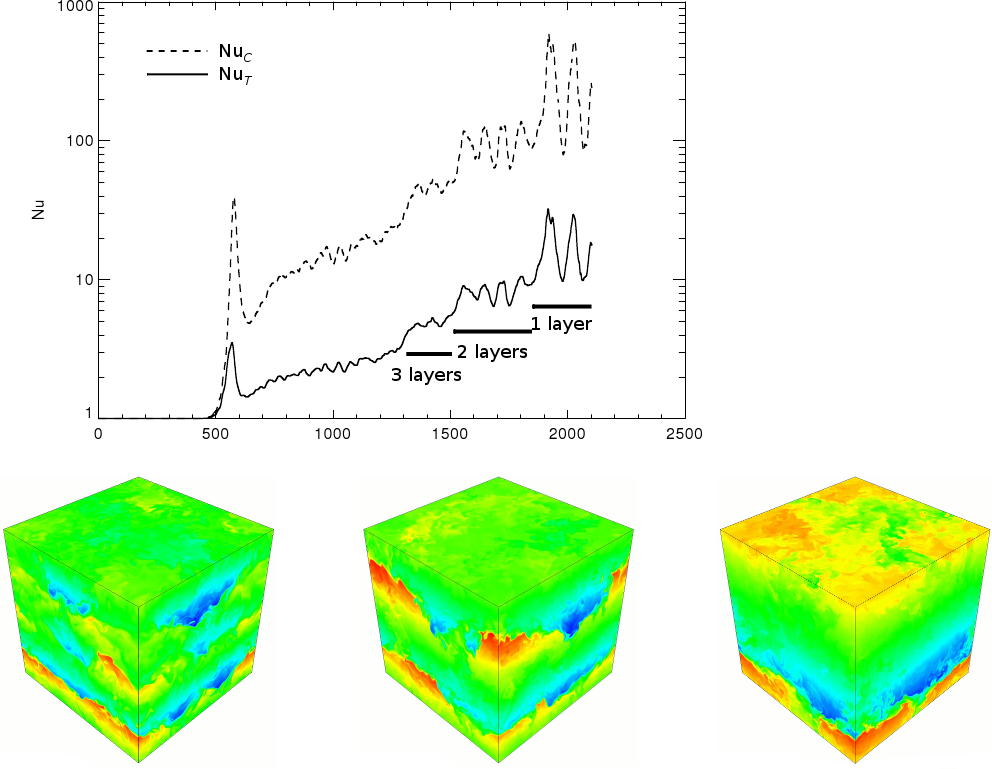
Fluxes of heat and composition through semi-convection (Mirouh et al. 2012).
As layers form and merge, the mean fluxes increase.
My research concerns the transport of heat and composition through layered convection, and its impact on the internal structure of stars and planets.
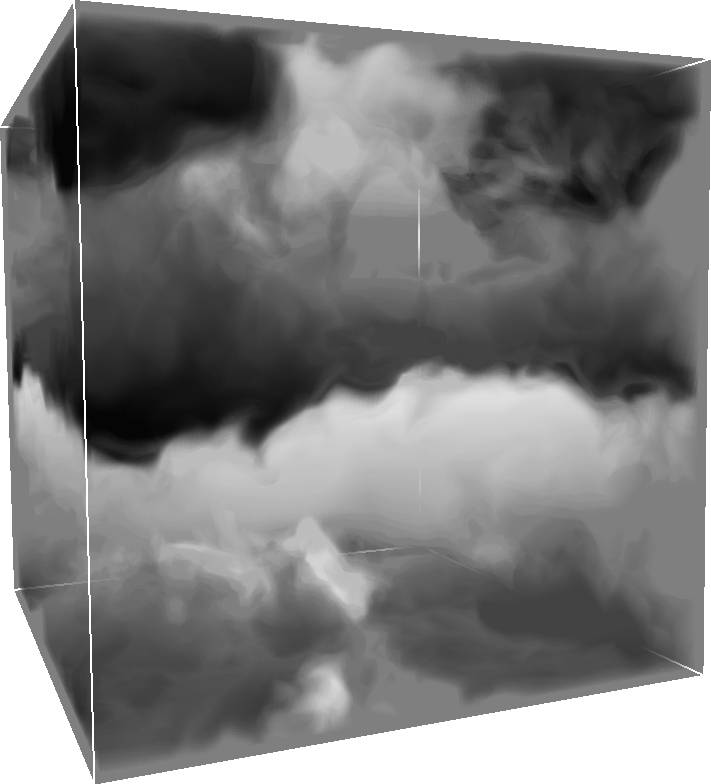
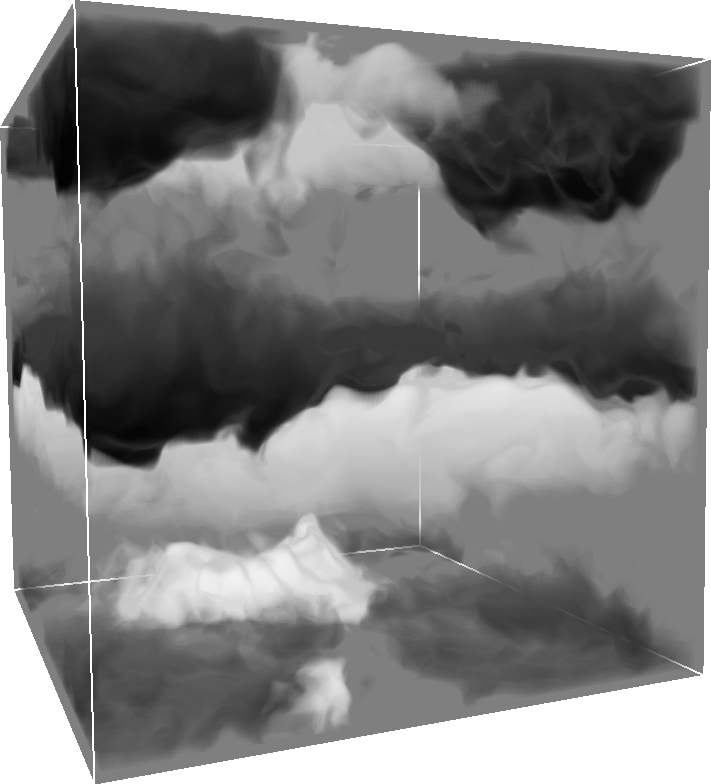
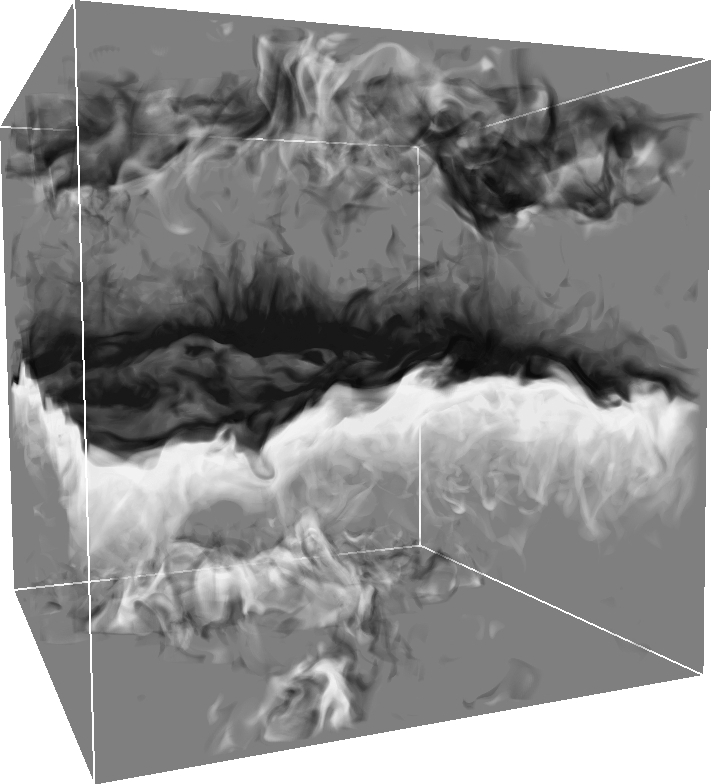
Perturbations to the temperature, composition, and density at
the interface between two layers (Wood, Garaud & Stellmach, in prep).